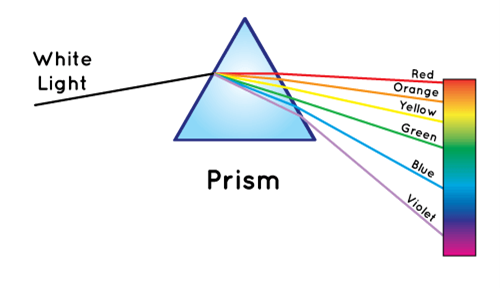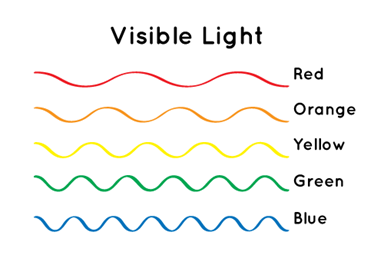Some people think the sky is blue because of sunlight reflected off the ocean and back into the sky. But the sky is blue even in the middle of the countryside, nowhere near the sea!!! Others think it’s because of the water in our atmosphere. But the sky is blue in places that are extremely dry, like the desert.
So, what’s the real reason?
The sky is blue because of the way sunlight interacts with our atmosphere.
Let me Explain, the light from the Sun is white. But it is really made up of all the colors of the rainbow.

If you’ve ever played with a prism or seen a rainbow, then you know light is made up of different colors. The name “VIBGYOR” helps us remember these colors: Violet, Indigo, Blue, Green Red, Orange, Yellow and Red.
All light travels in a straight line unless something gets in the way and does one of these things: —
reflect it (like a mirror)
bend it (like a prism)
or scatter it (like molecules of the gases in the atmosphere)

Some light travels in short, "choppy" waves. Other light travels in long, lazy waves. Blue light waves are shorter than red light waves.
Sunlight reaches Earth's atmosphere and is scattered in all directions by all the gases and particles in the air. Scientists call this Rayleigh scattering.
Blue light is scattered in all directions by the tiny molecules of air in Earth's atmosphere. Blue is scattered more than other colors because it travels as shorter, smaller waves. This is why we see a blue sky most of the time.
During sunset and dawn, a person most often sees red and orange shades in the sky. This is because light from the sun travels very low to the surface of the earth. Because of this, the path that light needs to travel during sunset and dawn is much longer than during the day. Due to the fact that the rays travel the longest path through the atmosphere, most of the blue light is scattered, so the light from the sun and nearby clouds appear reddish or with a pink tint to a person.